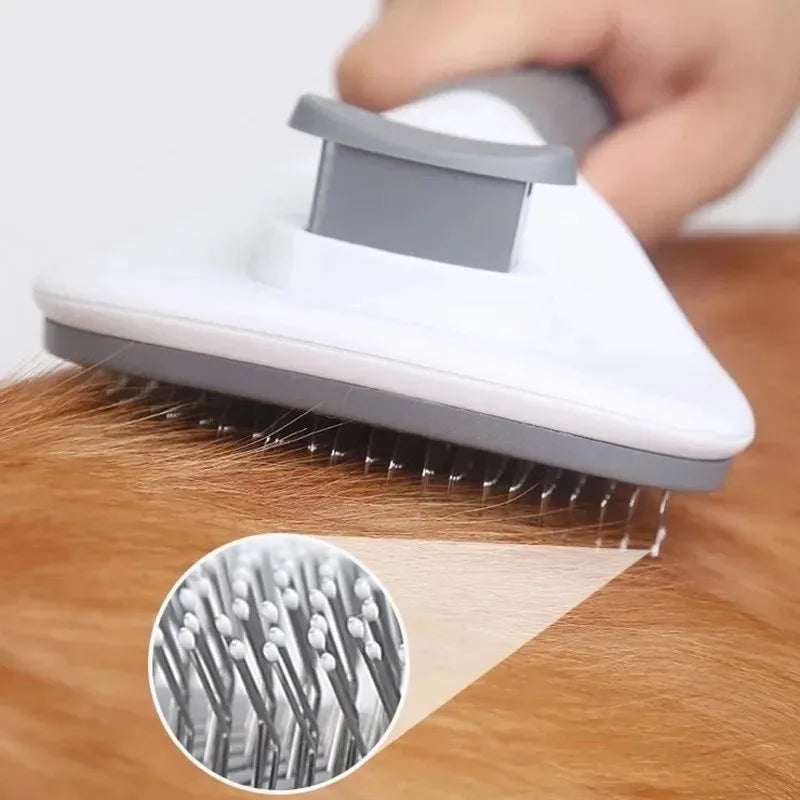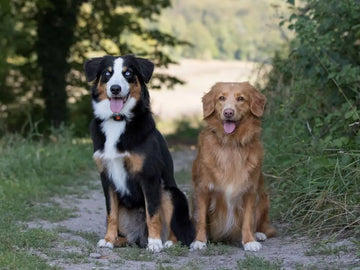Caring for your dog’s hygiene is an essential part of pet ownership, but what happens when your furry friend resists grooming or cleaning? Whether it’s bathing, brushing, nail clipping, or ear cleaning, some dogs can become highly anxious or downright uncooperative during these activities. While it’s a common challenge, it’s not insurmountable. With patience, understanding, and the right techniques, you can make grooming a positive experience for both you and your dog.
Here, we’ll explore the reasons behind grooming resistance, practical strategies to overcome it, and tips to build a trusting bond that ensures grooming is stress-free. To make the process easier, having the right pet supplies for grooming can also help set the stage for success.
Understanding Why Your Dog Resists Grooming
Before diving into solutions, it’s crucial to understand the reasons why your dog may resist grooming. Each dog is unique, and their resistance can stem from a variety of factors, including:
-
Fear of the Unknown
Dogs often fear what they don’t understand. Grooming tools like brushes, clippers, or nail grinders can be intimidating if they’ve never seen or experienced them before. -
Sensitivity to Touch
Some dogs have sensitive skin or certain areas (like paws or ears) that they don’t like being touched. Past trauma or negative experiences can also contribute to this sensitivity. -
Noise and Vibrations
The sound of clippers, blow dryers, or running water can be overwhelming for dogs, especially those prone to anxiety. Having the right puppy products can help reduce stress during these moments. -
Previous Negative Experiences
If your dog has experienced pain, discomfort, or fear during a grooming session in the past, they may associate grooming with something unpleasant. -
Lack of Training or Conditioning
Dogs that aren’t accustomed to being groomed from a young age may resist simply because they haven’t been trained to tolerate it.
Understanding these factors will help you approach the issue with empathy and implement the most effective strategies. Having the best dog grooming supplies on hand can also make a difference.
Steps to Help Your Dog Overcome Grooming Resistance
Start Small and Build Trust
If your dog is highly resistant to grooming, don’t jump into a full grooming session right away. Start by introducing your dog to grooming tools and letting them sniff or inspect them. For example, let them see and smell the brush before using it. Reward them with treats and praise for staying calm.
Gradually increase the level of grooming over time. Begin with short grooming sessions, such as brushing a small area, and build up as your dog becomes more comfortable.
Use Positive Reinforcement
Reward-based training is one of the most effective ways to reduce resistance. Use treats, toys, or verbal praise to associate grooming with positive experiences.
For instance:
- Give your dog a treat after each nail you clip.
- Offer a toy to distract them during brushing.
- Use a calm, soothing voice to reassure them throughout the session.
Over time, your dog will begin to associate grooming with rewards and feel less stressed.
Desensitize Your Dog to Grooming Tools
If your dog is fearful of grooming tools, desensitization is key. Introduce the tools gradually and in non-threatening ways. Here’s how:
- Place the tools near your dog during playtime or feeding so they can get used to their presence.
- Turn on clippers or blow dryers from a distance to help them acclimate to the sound.
- Gently touch your dog with the tools (without using them) to reduce fear of contact.
Be patient and consistent, rewarding calm behavior each time.
Handle Sensitive Areas Gently
Many dogs dislike having their paws, ears, or tails handled. Work on getting your dog used to touch in these areas by practicing gentle handling daily.
- Start by lightly touching the area for a few seconds, then reward them with a treat.
- Gradually increase the duration of touch over time.
- Be mindful of their body language, and stop if they show signs of stress.
This process helps build trust and reduces sensitivity over time.
Make Grooming Part of Routine Life
Incorporate grooming into your dog’s daily routine to make it feel less like a chore. For example, you can:
- Brush their coat during cuddle time on the couch.
- Wipe their paws gently after walks.
- Inspect their ears and teeth regularly to normalize the process.
When grooming becomes a regular, low-pressure activity, your dog is more likely to accept it.
Choose the Right Tools and Products
Using the right grooming tools can make a world of difference. Tools that are harsh, noisy, or uncomfortable can increase your dog’s resistance. Opt for:
- A gentle, detangling brush for sensitive coats.
- Quiet clippers or grinders for trimming nails.
- Dog-friendly shampoos that won’t irritate their skin.

Investing in quality dog grooming supplies can reduce discomfort and make grooming more pleasant for your dog.
Pay Attention to Your Dog’s Comfort
Your dog’s comfort should always come first during grooming sessions. Ensure they’re relaxed by:
- Grooming in a quiet, familiar space.
- Keeping the water temperature warm but not hot during baths.
- Taking breaks if your dog seems stressed or restless.
Comfortable dogs are more likely to cooperate and even enjoy grooming.
Enlist Professional Help
If your dog’s resistance persists despite your efforts, consider seeking help from a professional groomer or a dog behaviorist. A professional groomer has the skills and tools to handle even the most difficult dogs, while a behaviorist can provide training techniques tailored to your dog’s specific needs.
How to Groom a Resistant Dog Safely
While working to build your dog’s tolerance, safety should always be a priority. Here are some tips for safe grooming:
- Use Muzzles or Restraints if Necessary: If your dog becomes aggressive during grooming, a soft muzzle or restraint can protect both of you. Ensure it’s comfortable and doesn’t cause distress.
- Avoid Forcing the Issue: Never force grooming if your dog is panicked or highly stressed. This can worsen their fear and damage trust.
- Take Breaks: If your dog becomes agitated, take a break and resume when they’ve calmed down.
How to Make Grooming Enjoyable
The ultimate goal is to make grooming a positive experience for your dog. Here are some additional tips:
- Use Calming Techniques: Play soft music, use calming sprays, or give your dog a soothing massage before grooming.
- End on a Positive Note: Always finish grooming sessions with a reward or an activity your dog loves, like a walk or playtime.
- Be Patient: Remember that change won’t happen overnight. Patience and consistency are key.
Conclusion
Grooming a resistant dog is undoubtedly challenging, but it’s also an opportunity to strengthen your bond. With the right pet supplies, patience, and a gentle approach, you can turn these moments into positive experiences. Take the time to understand your dog’s fears, use positive reinforcement, and ensure their comfort every step of the way.
Remember, trust takes time to build. When you approach grooming with empathy and consistency, you’ll not only improve your dog’s hygiene but also deepen your connection. Your dog deserves to feel safe and loved—and with a little effort, you’ll close the distance between stress and serenity during grooming!









